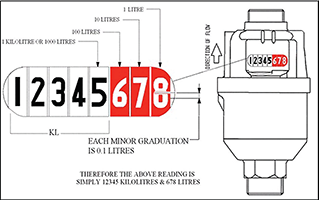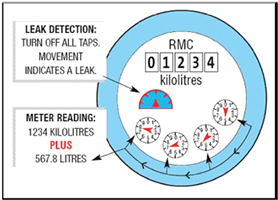Water and Sewerage
Water Wise Information
"Odds and Evens" Water Sprinkler Use
This initiative is important to enable sufficient fire fighting capacity in Hughenden. Council appreciates your continued co-operation in maintaining this water management program to ensure the level of water at peak demand remains sustainable.
EVEN NUMBER PREMISES SPRINKLING DAYS: MONDAY, THURSDAY AND SATURDAY.
ODD NUMBER PREMISES SPRINKLING DAYS: SUNDAY, TUESDAY AND FRIDAY.
No sprinklers should be used on Wednesdays. This is to allow the reservoirs to completely fill and to enable programmed maintenance of the system to be carried out. Use of "handheld" hoses is still permitted at any time.
Instructions on how to read your meter are provided on the reverse side of the letter to enable you to monitor your water usage. Keeping track of your water consumption will also enable you to ensure you are not using water in excess of your annual allowance.
The average single dwelling has an annual allowance of 1,200 kL. If you are unsure of the allowance that pertains to your assessment please do not hesitate to contact this office on 4741 2900 for confirmation.
Why conservation of water is important for the community
Conservation of water is important to ensure that the quality of lifestyle that we enjoy will remain available.
By accessing and using water-wise information from Council's and DNRM's websites (see below) you can save water, reduce your water bills, and provide future generations with good water conservation practices and sustainable water supply for the future.
Water Wise Information Fact Sheets:
Factsheets, helpful guides and information about being Waterwise in Queensland:
- Being waterwise at home
- Being waterwise with your swimming pool and spa
- Detecting leaks and reading your water meter
- Home water audit
- Home waterwise quiz
- How to be waterwise
- Rainwater tanks
- Residential evaporative air conditioners
- Water saving tips for your garden
- Water’s journey to your tap and beyond
How to check if you have a Water Leak
- Turn off all taps, including the tap connecting cold water to the hot water system.
- Read your Water Meter (as illustrated below)
- Wait for five minutes to allow recently flushed toilets to fill etc.
- Return to the water meter and if you see any of the numbers are still recording, this indicates that you may have a water leak.
- If there is no movement on the dials, there still may be a slow leak. To check this, do not use any water for at least 1-2 hours or even overnight, then take another reading and see if any of the dials moved.
How to Read Your Water Meter
There are several different types of water meters used throughout the Region which can be read in the same way. The meter measures how much water is used per property in kilolitres. The following are two common types of water meters installed:


The BLACK figures, which measure kilolitres, are read by Council half-yearly for water billing purposes. The RED figures represent fractions of a kilolitre which may more easily indicate a water leak.